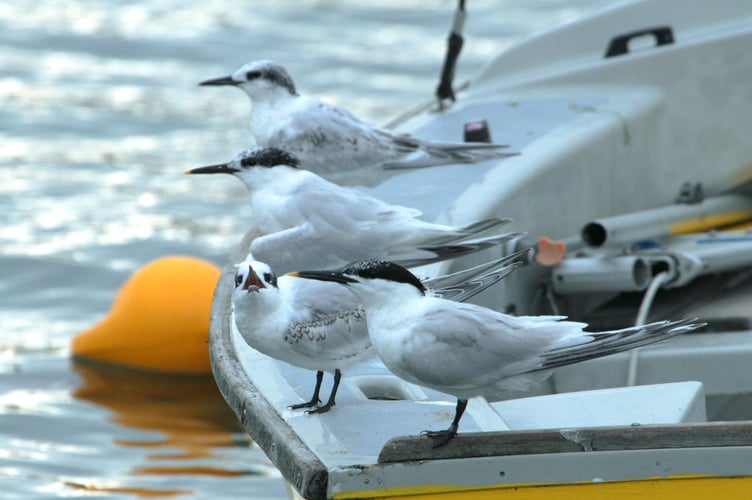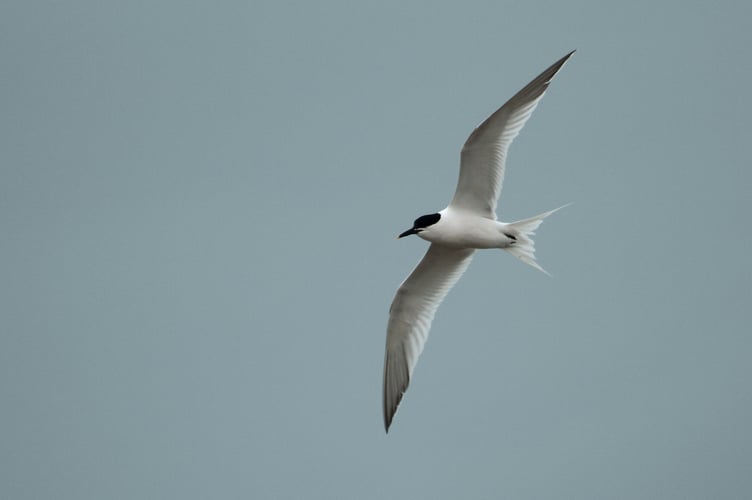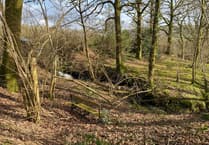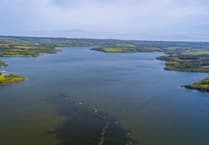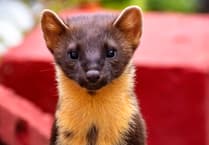During the winter we have sometimes seen woodcock in the damper parts of Andrew's Wood, a nature reserve at Loddiswell managed by the Devon Wildlife Trust. It is a 23.5 hectare biological Site of Special Scientific Interest, notified in 1952, a boasts more than 9,000 different plants.
On the second Thursday of each month, anyone can join our Devon Wildlife Trust leaders, Claire and Lineka on a workday in Andrew’s Wood. This month we have had our day but try to join us in May.
By now they should have returned to continental Europe to breed but some years ago we found a pile of woodcock feathers during our April meeting. Perhaps its brown and buff camouflage had not protected it from the fox that had crept up on it.
On a more cheerful note, this year newly arrived chiffchaffs were calling “chiff-chaff” around every clearing.
Last week we replaced some of the non-slip netting on the board-walks with stronger mesh and made a check of the dormouse boxes to see if any needed repair.
I began clearing the growth of moss and grass from some big, quartzite boulders. The wood used to be called Stanton, because of these boulders; stan = stone. Moss is good, some say moss is like love – it hides all blemishes with its own beauty, but the bare boulders have a value too.
They are favourite basking places for the lizards that live in the clearings. I also recorded the plants in Bluebell Clearing. I found fifty different species but easily the most abundant plant was bluebell. In a week or two they will cover Bluebell Clearing in a wash of blue.
Only in Britain do bluebells spread in such profusion; botanists from all over Europe come especially to see our bluebells, in woodland or on moorland or coast. The bells of our native bluebells always droop and grow only on one side of the stem.
The bells of Spanish bluebells, the garden bluebell, are paler blue, droop only slightly and grow around the stem, not just on one side. Because of pollination by insects, many wild Spanish bluebells have some native bluebell characteristics and increasingly, native bluebells may have some Spanish bluebell traits.
In a few stretches of coast between Start Point and Burgh Island, we have a rare and diminutive member of the bluebell family, the spring squill. It grows only about six centimetres tall in short turf, pale blue stars with thin, curly green leaves at the base.
The rabbit-grazed knolls near Bolt Tail are my favourite places to find spring squills; a few days ago I looked for them but they will need a few more days of sunshine.
There is a recent invader that masquerades as a white bluebell but its smell soon tells you that it is not a bluebell. It is three-cornered leek, a member of the garlic family, that is native to the western Mediterranean coast. It was introduced to a few country house gardens in Cornwall at the end of the Eighteenth Century and spread around Cornwall during the Nineteenth Century. The first record for Devon was at Salcombe in 1901 and the next at Britannia Royal Naval College in Dartmouth in 1920.
In the last fifty years it has spread ever more rapidly.
April is its month of flowering. If once it invades your garden you are unlikely to eradicate it but in May it withers away and is invisible till next spring.
Down on the Kingsbridge/Salcombe estuary, on our April count, Paul Rossiter and I watched as several Sandwich terns, back from Africa, flew by us and dived for sand eels; we had wonderful views. Our land-based swallows have also returned, sweeping elegantly over the estuary and across the fields.
